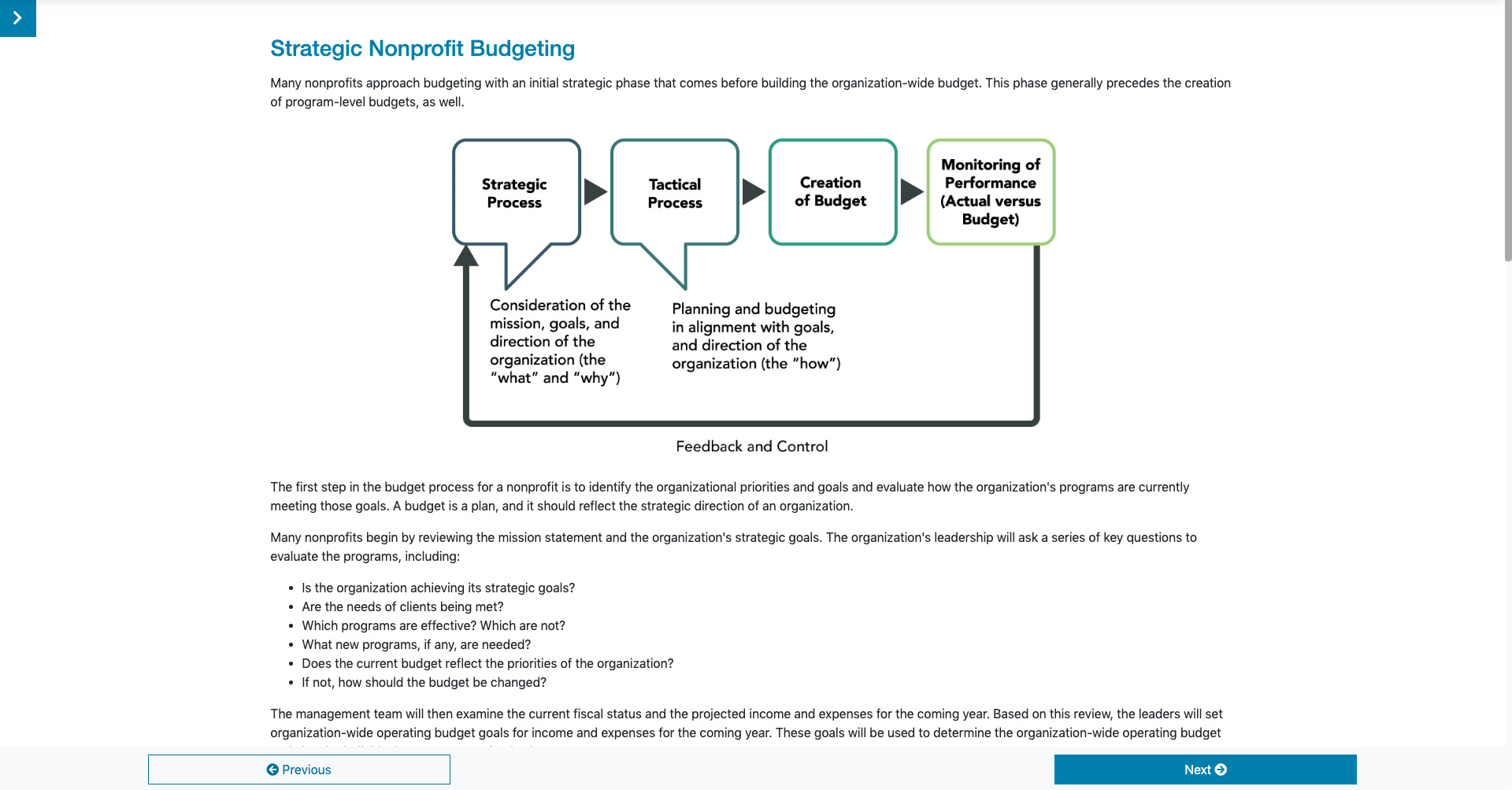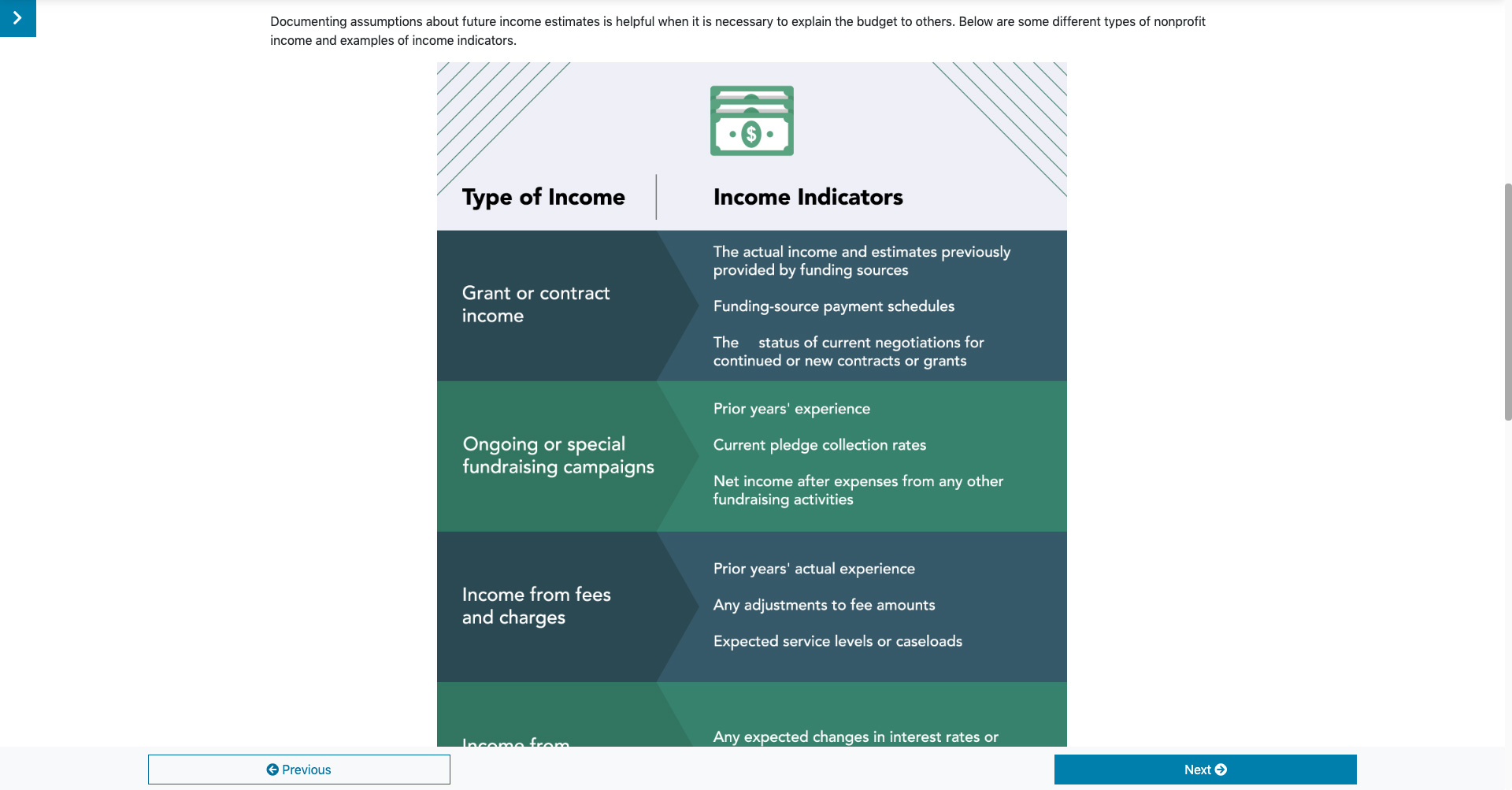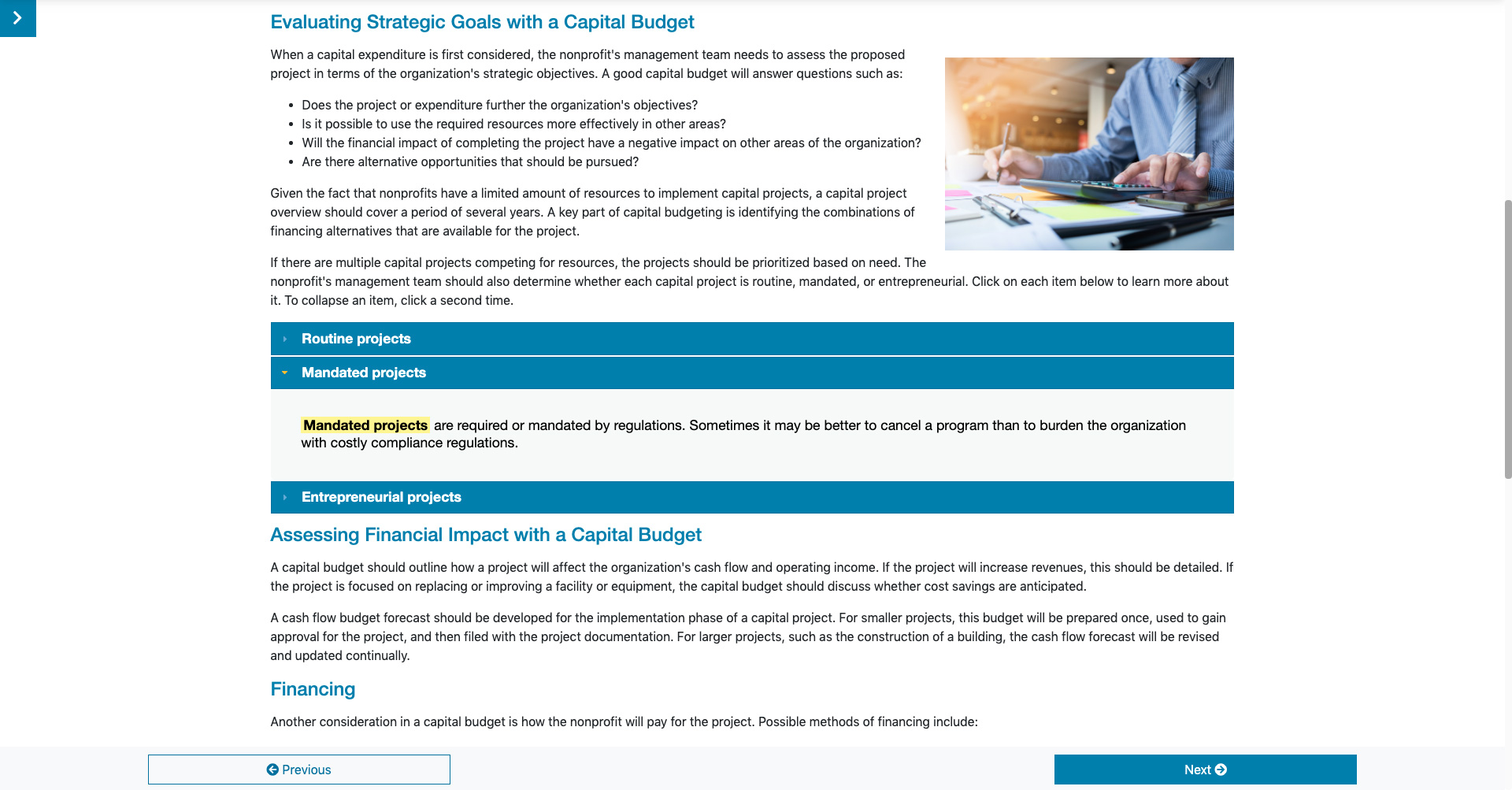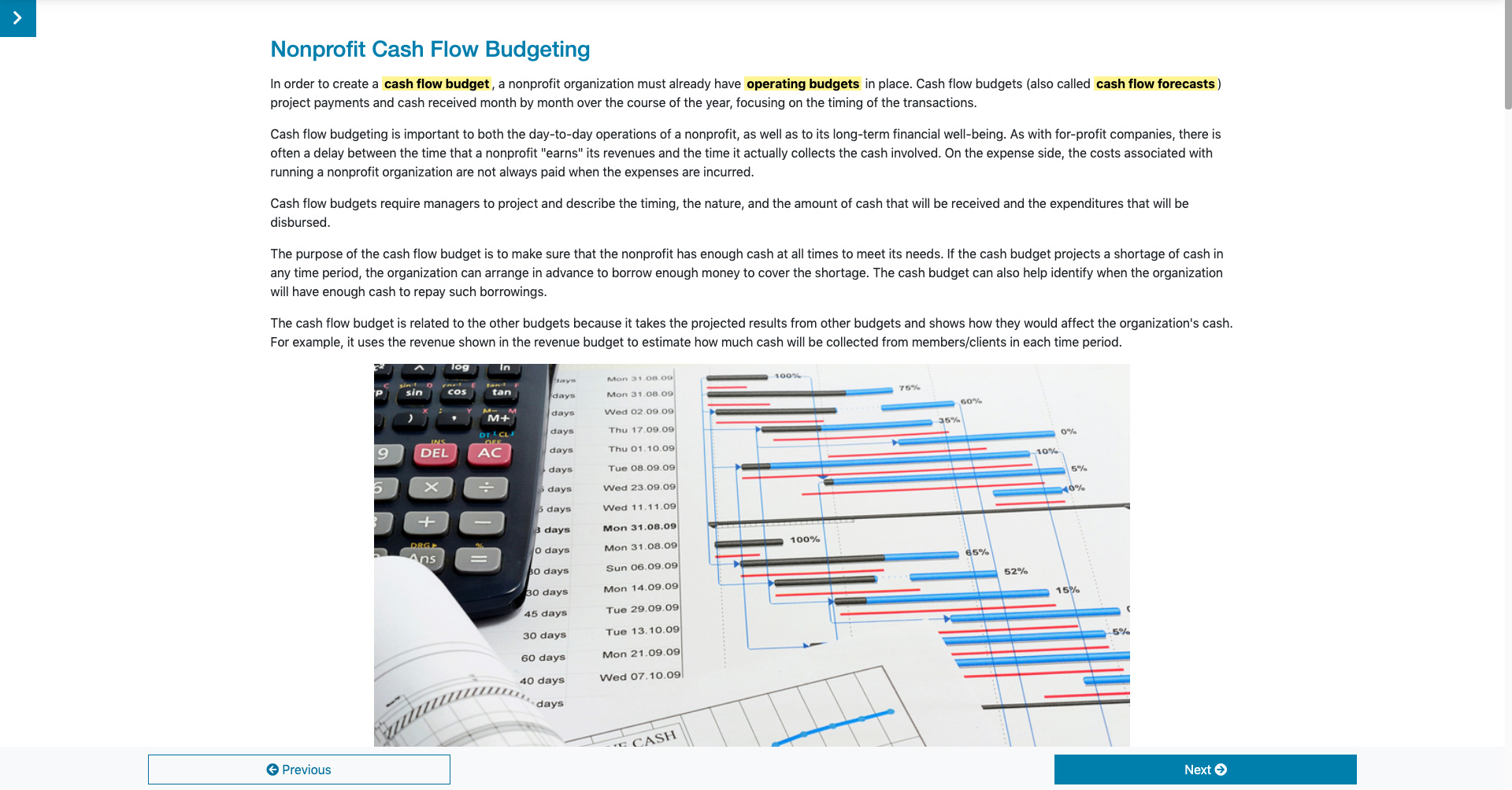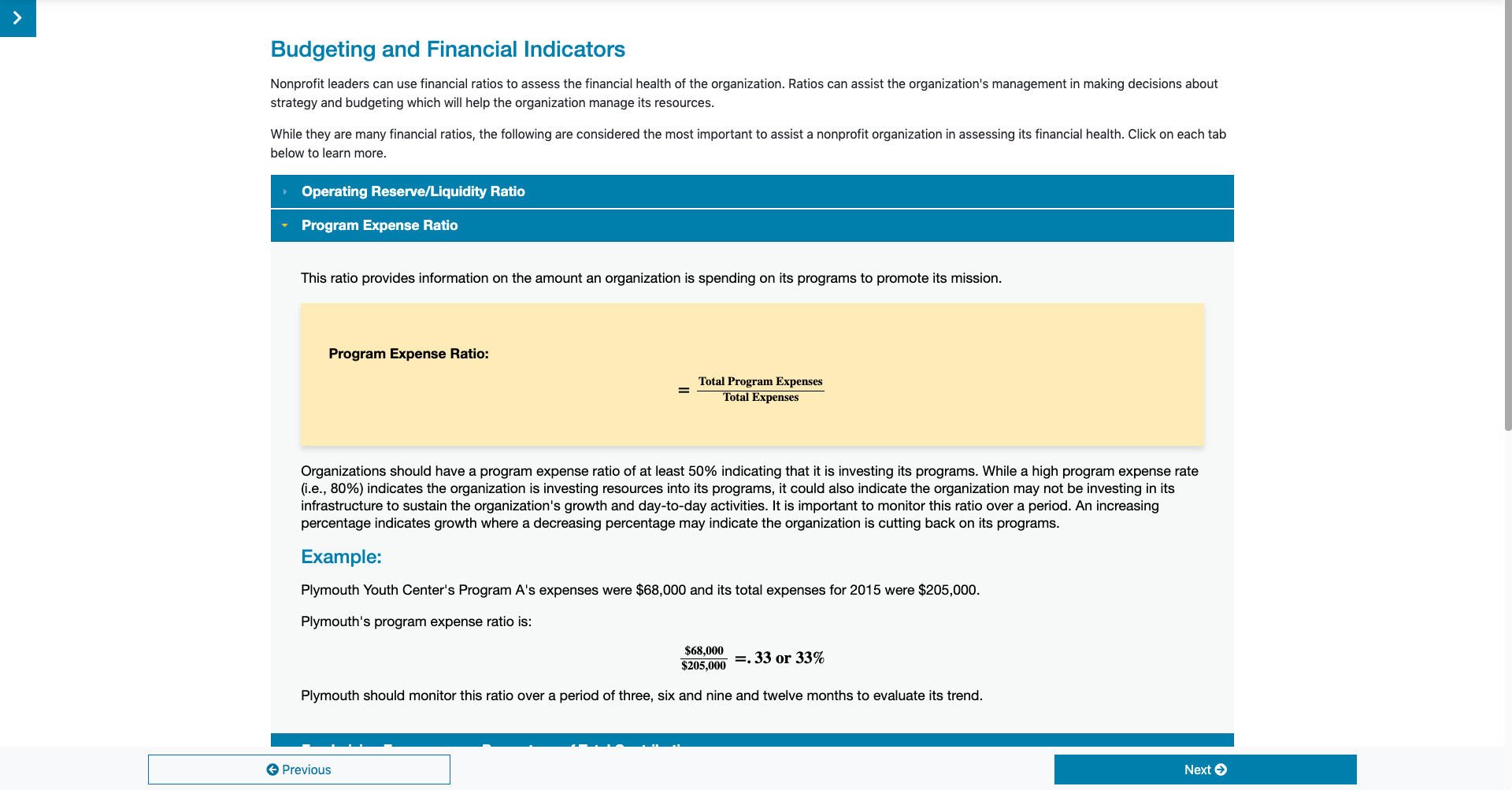Credits: CEU = IACET CEUs | PDU = PMI PDUs | HRCI = HRCI Credits | SHRM = SHRM PDCs | CFRE = CFRE Credits | ACE = ACE Credits

Budgeting in a Nonprofit Organization
Key Features
Course Description
If you're involved in a nonprofit organization, you likely know all too well the importance of budgeting. In this course, you will gain an understanding of the uses and functions of budgets and the relationship between strategic budgeting and tactical budgeting. You will also learn about the organization-wide budget and different budget systems. After introducing the basics of budgeting in a nonprofit, the course continues on to slightly more advanced budgeting topics such as capital budgets, cash flow budgets, and opportunity budgets. You will also learn how nonprofit organizations are using different budgeting techniques to handle operating challenges.
Learning Outcomes
- Explain the uses and functions of nonprofit budgeting
- Describe the different types of budgets used by a nonprofit organization
- Recognize the use of the organization-wide operating budget and program operating budgets
- Explain how an operating budget is created
- Analyze a nonprofit operating budget through variance analysis
- Describe how a capital budget is used and created
- Explain the importance of a cash flow budget and describe how it is created
- Recognize how the budget process can be managed for optimal results
Refund Policy
You may request a refund up to 7 days from the purchase date. The registration fee will only be refunded if less than 10% of the course has been completed. Completion percentage can be viewed on the Course Progress page from within the course.
Notes
This course has an “Ask the Expert” feature, which submits your questions directly to an expert in the field you are studying. Questions are answered as quickly as possible and usually within 24 hours.
This course does not require any additional purchases of supplementary materials.
Learners must achieve an average test score of at least 70% to meet the minimum successful completion requirement and qualify to receive IACET CEUs. Learners will have three attempts at all graded assessments.
Course Preview
Pinch to zoom

